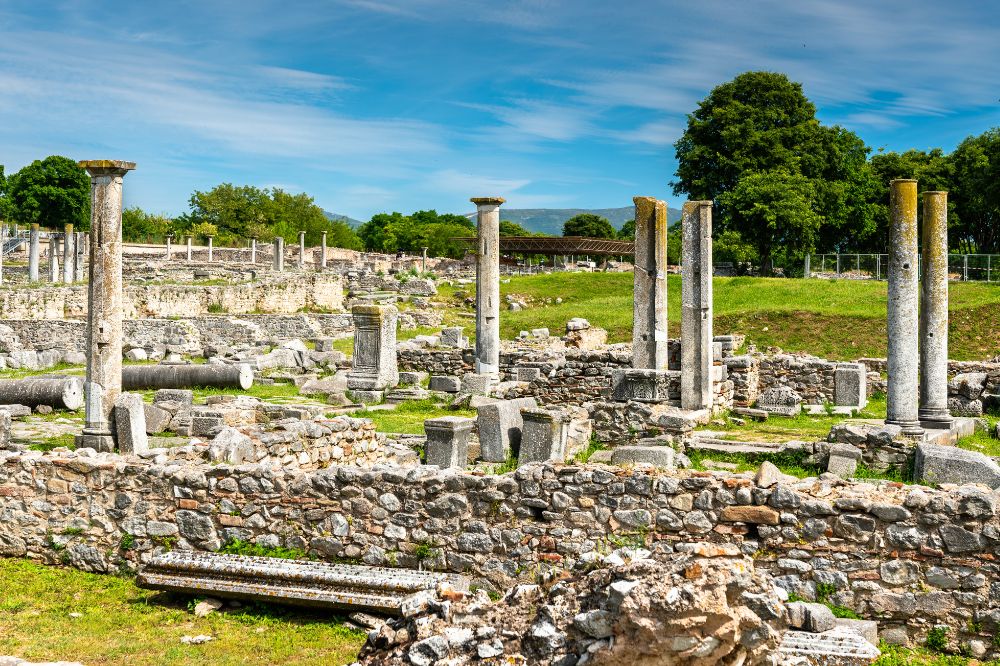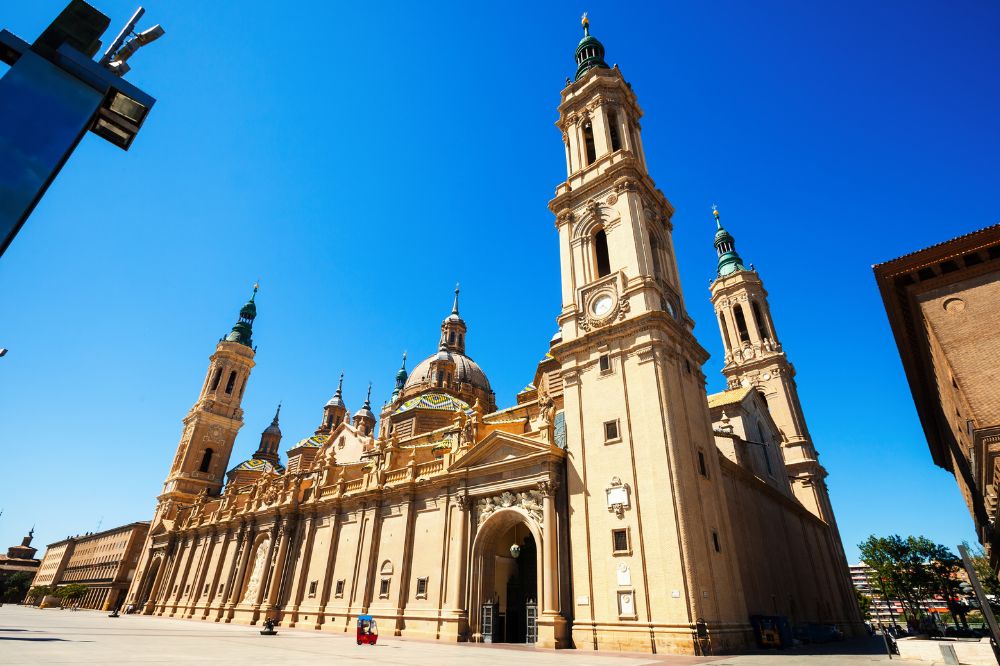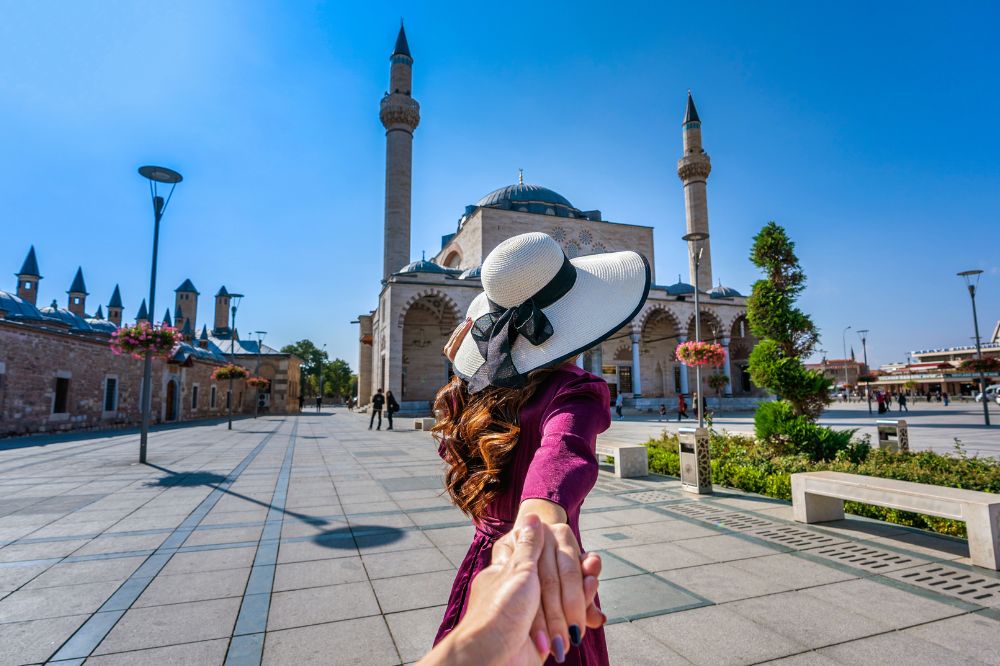
Christian pilgrimages are more than just trips; they are paths of introspection and spiritual renewal. The Route of St. Paul, a journey filled with history and faith, offers devotees the opportunity to follow in the footsteps of the apostle who transformed Christianity.
This guide will help you discover the key places of his life and mission, offering you a comprehensive guide to embark on this sacred journey. Our goal is for you to understand the importance of these points and feel the profound impact they can have on your life. Join us on this journey, where each step is an opportunity for redemption and an encounter with the divine.

St. Paul, known as the Apostle to the Gentiles, is a central figure in the history of Christianity.
Before his transformation, he was Saul of Tarsus, a fervent persecutor of Christians. His life changed radically on the Road to Damascus, where he experienced a divine revelation that led him to convert to Christianity. This event not only marked his life but also that of millions of believers throughout the centuries.
Paul’s conversion is a crucial point in the Christian faith. On his way to Damascus, a bright light blinded him, and he fell to the ground, hearing the voice of Jesus asking, “Saul, Saul, why do you persecute me?”. This mystical event transformed him into one of the greatest defenders and spreaders of the Christian message.
St. Paul is vital to Christianity for his mission of bringing the gospel to the Gentiles, those who were not Jews. Through his numerous journeys, letters, and teachings, he established Christian communities throughout the Mediterranean world. His epistles, included in the New Testament, offer profound teachings and practical guides for living a Christian life.
In your pilgrimages, following in St. Paul’s footsteps will allow you to connect with the essence of his mission and better understand his impact on the spread of Christianity.
The Epistles of St. Paul are an invaluable treasure for any believer seeking to deepen their Christian faith. These letters, addressed to various communities and individuals, contain teachings and messages that have shaped Christian doctrine throughout the centuries.
Among the most important letters are:
When visiting Ephesus, for example, you can imagine Paul writing his letters, surrounded by the community he so inspired. His epistles not only formed the basis of many Christian beliefs but also continue to guide the faithful on their spiritual journey.

Following Paul’s footsteps, you will discover places that were witnesses to his mission and teachings. Each destination offers a unique opportunity to deepen your faith. Just as Abraham, whose journey was guided by God’s promise, you too can follow this geographical route, feeling the divine presence in each place visited.
St. Paul’s first mission began at the church in Antioch, where Paul and Barnabas were commissioned by the Holy Spirit to bring the gospel to the Gentiles.
The first destination was Cyprus. In the city of Paphos, Paul confronted the magician Elymas, temporarily blinding him, and converted the proconsul Sergius Paulus, demonstrating the power of God.
From Cyprus, they traveled to Antioch of Pisidia. There, Paul preached in the synagogue, explaining how Jesus Christ is the culmination of the promises made to Abraham and the prophets. His message attracted many but also provoked opposition, forcing them to leave the city.
In Iconium, Paul and Barnabas preached so successfully that a great number of Jews and Gentiles believed them. However, they faced fierce resistance, and under the threat of being stoned, they had to flee.
Then they arrived in Lystra, where Paul healed a man crippled from birth, a miracle that made people mistake them for gods. Despite this, enemies from Iconium incited the crowd, and Paul was stoned and left for dead. But, miraculously, he survived and continued his mission.
Finally, in Derbe, they made many disciples and strengthened Christian communities. Upon returning to Jerusalem, they shared the wonders God had done through them, inspiring the early church and marking the beginning of a new era in the spread of the gospel.
St. Paul’s second mission is an exciting journey full of challenges and triumphs that consolidated Christianity in Europe. It began in Antioch and will take you through places full of history and spirituality.
The first destination was Macedonia, where Paul, following a divine vision, arrived in Philippi. Here, he converted Lydia, a merchant of purple, and freed a possessed slave, which led to his imprisonment. However, a miraculous earthquake freed him, and the jailer and his family converted to Christianity.
From Philippi, Paul went to Thessalonica. In this city, he preached in the synagogue for three weeks, and many Greeks and prominent women accepted the faith. But, Jewish opposition forced Paul to leave the city under the cover of darkness.
In Berea, he found a group of open-minded Jews who examined the Scriptures daily to verify his teachings. Many believed, but the hostility from Thessalonica followed him here too. Then he arrived in Athens, where he confronted Epicurean and Stoic philosophers in the Areopagus.
Finally, in Corinth, Paul stayed for a year and a half, founding a robust church in this port city. Here he met Priscilla and Aquila, coworkers and collaborators in the mission.

St. Paul’s third mission is a journey of strengthening and consolidating the Christian communities he had already established. It began in Antioch and headed towards Ephesus, where he spent more than two years preaching and teaching.
In Ephesus, Paul performed many miracles, healing the sick and expelling evil spirits, attracting crowds. His preaching had such an impact that many stopped worshipping Artemis, causing a riot led by the city’s silversmiths. Despite the opposition, the church in Ephesus grew and strengthened.
From Ephesus, he traveled to Macedonia. There, he reviewed the communities he had founded on his second mission, encouraging and building up the believers. Paul wrote the second letter to the Corinthians during this time, addressing the difficulties facing the church in Corinth and reaffirming his love and dedication to them.
Then, Paul headed to Greece, where he spent three months. Here, probably in Corinth, he wrote the Epistle to the Romans, one of his most important letters.
St. Paul’s journey to Rome is a story filled with drama and unshakable faith. It all began with his arrest in Jerusalem. After preaching in the temple, he was falsely accused and detained for causing disturbances. To protect himself from a plot to kill him, he appealed to his right as a Roman citizen and was transferred to Caesarea.
Here, Paul faced several trials before governors like Felix and Festus, and King Agrippa. Although they found no reason to condemn him, Paul decided to appeal to Caesar, which meant he had to be sent to Rome for trial.
The journey to Rome was fraught with difficulties. Aboard a ship, they faced a terrible storm that led them to shipwreck on the island of Malta. Here, Paul performed miracles, including healing the father of the island’s chief. Finally, after months, he arrived in Rome.
In Rome, Paul lived under house arrest, but this did not stop his mission. He continued preaching and writing letters to Christian communities. Unfortunately, after several years, Paul was martyred during Nero’s persecution. His legacy, however, endures.

Before following in his footsteps and embarking on this spiritual journey, it is important to plan carefully and consider several aspects. In this section, we will provide practical advice and essential resources to make your pilgrimage enriching and meaningful.
Before following his steps and embarking on this spiritual journey, it is important to plan carefully and consider several aspects. In this section, we will provide practical advice and essential resources to make your pilgrimage, whether following the Route of St. Paul or the Ignatian Way, enriching and meaningful.
Planning your journey following in St. Paul’s footsteps can be a unique and transformative experience. To ensure everything goes well, it is important to consider some crucial details.
The best time of year for this pilgrimage is spring (April to June) or autumn (September to November). During these months, the weather is pleasant, avoiding the extreme temperatures of summer and winter. For effective planning, keep in mind the following documentation and practical recommendations:
Preparing spiritually is as important as organizing the logistical aspects of the trip. Therefore, before departing, dedicate time to prayer and meditation. Reflect on the motivations and expectations you have for this journey. Ask for guidance and wisdom to open your heart and mind to the experiences you will live.
Here are some tips for a transformative experience:
Throughout this journey, you will visit sites full of history and spirituality, where the apostle Paul lived and preached.
In Ephesus, you will visit the Basilica of St. John, built on the site where it is believed the apostle John was buried. Although it was not founded by St. Paul, its importance in early Christianity makes it an essential stop. Here you can meditate on the connection between the apostles and their mission to spread the gospel.
In Thessalonica, the Church of St. Demetrius, dedicated to the city’s patron saint, is another place you can’t miss. This impressive Byzantine church holds sacred relics and offers an atmosphere of profound spirituality.
The city of Philippi hosts the ruins of a basilica where Paul baptized Lydia, the first convert in Europe.
In Corinth, you must visit the Church of St. Paul, a modern place of worship built in honor of the apostle. Here, you can participate in religious services and learn more about the letters Paul wrote to the Corinthian community, filled with teachings and exhortations.
These places offer a deep insight into the life and times of the apostle, allowing you to connect with his mission in a tangible way.
In Ephesus, the Archaeological Museum is a must-visit. Here you will find artifacts dating back to St. Paul’s time, including inscriptions and statues that illustrate life in this ancient city.
The archaeological site of Philippi, in Greece, is another essential place. Here you can tour the ruins of the city, including the theater, the Roman forum, and the basilicas. You will feel a special connection walking on the same ground he walked on.
Visiting Corinth is a must, where the Archaeological Museum houses numerous finds from the ancient city, including objects from the Roman and Greek periods. Here you can see the remains of the Bema, the tribunal where Paul was brought before the proconsul Gallio.
In Caesarea Maritima, Israel, the ruins of the port and the Roman theater will transport you to the days when Paul was imprisoned before being sent to Rome. This site offers an impressive view of the Mediterranean Sea and allows you to reflect on Paul’s courage in his mission.
Stay Connected with WayHoly
Discover your perfect pilgrimage and be the first to know about new journeys. By subscribing to our newsletter, you’ll receive the latest updates on pilgrimages, exclusive offers, and spiritual resources to enrich your faith journey.
Don’t miss the opportunity to deepen your connection with God and lead others on their path to spiritual renewal. Join us today and become an instrument of His Will through WayHoly!
“To upload your pilgrimage, please choose one of our plans and create an account, or log in if you’re already a member. Join us in guiding others on their spiritual journey.”